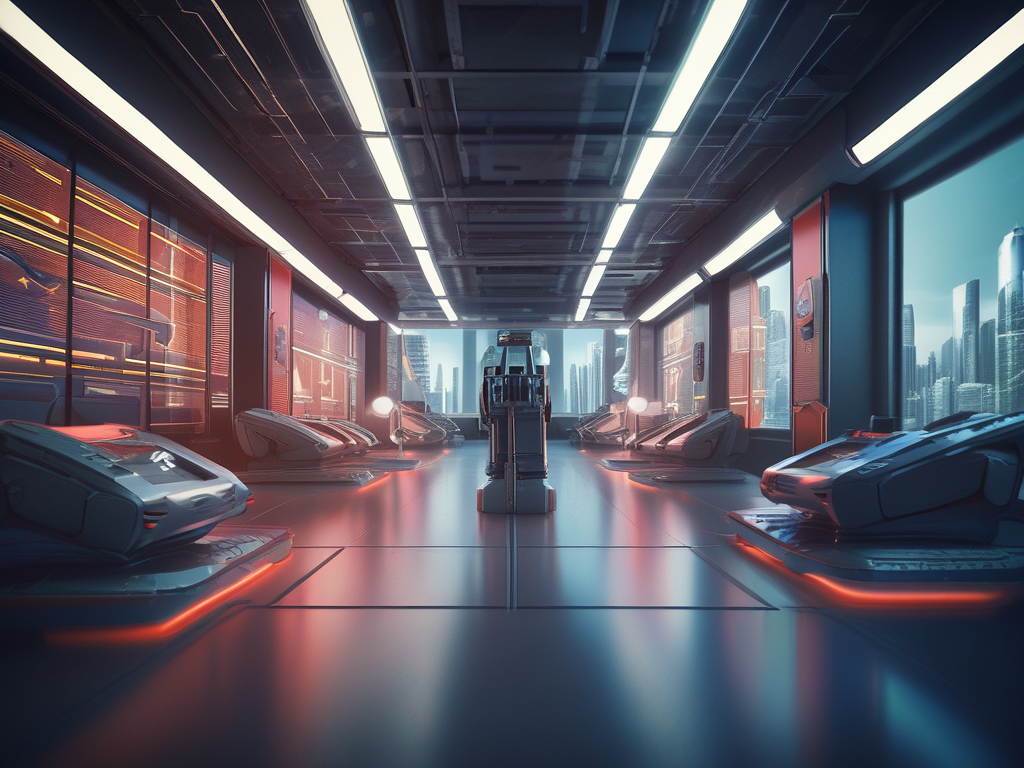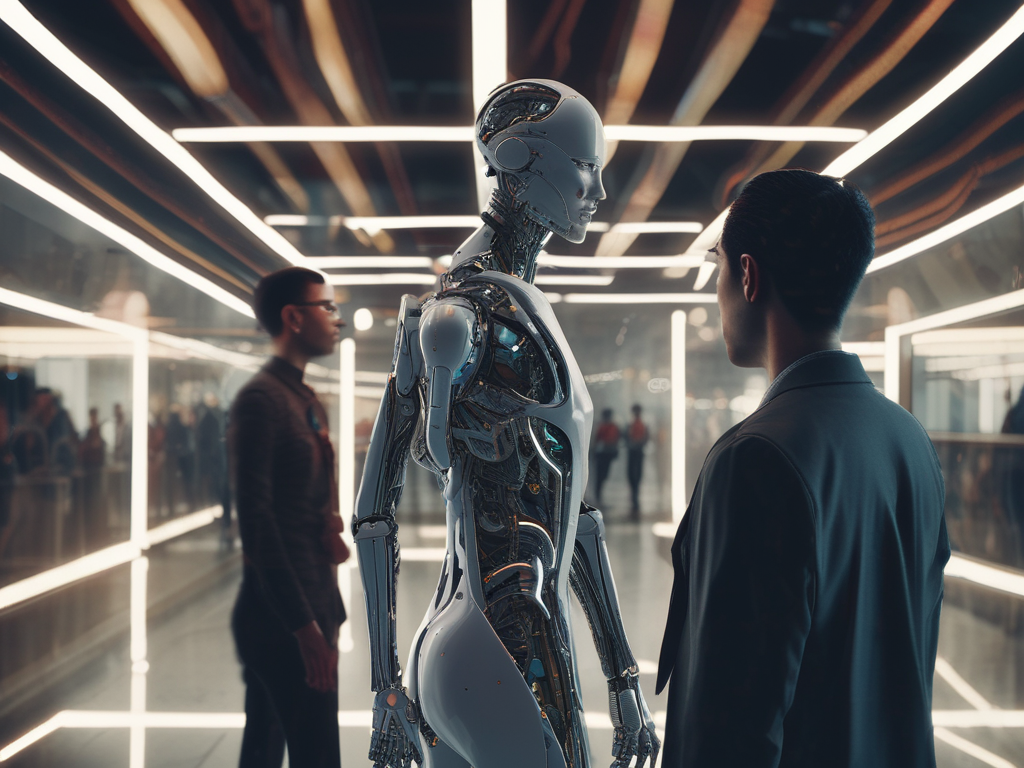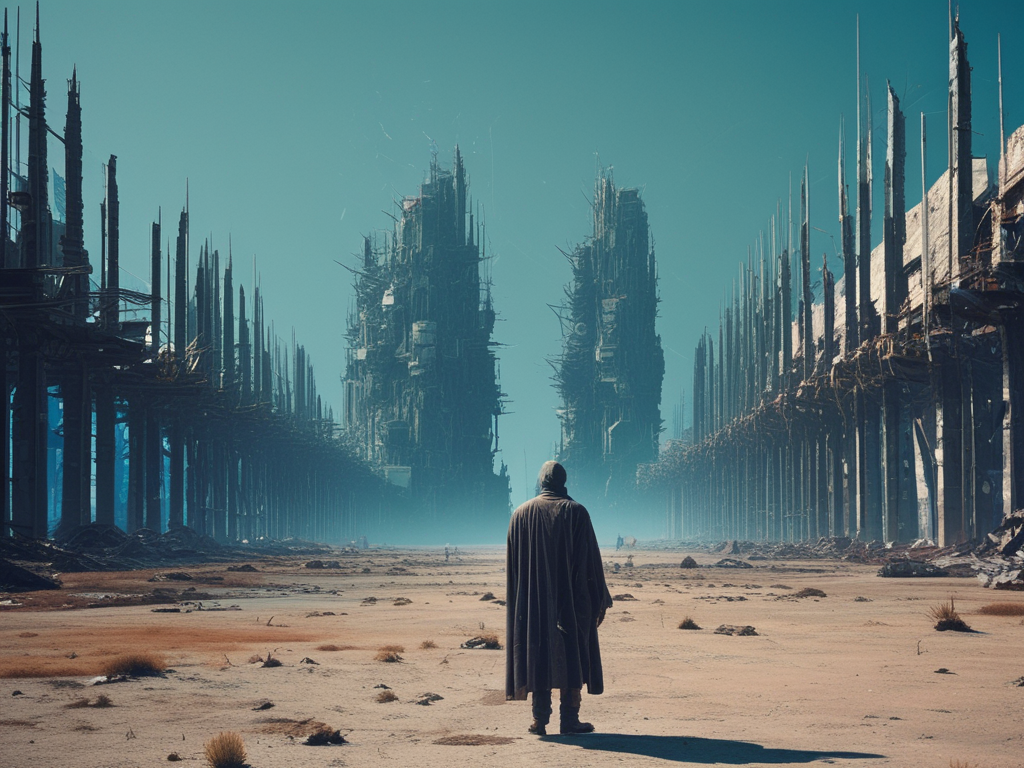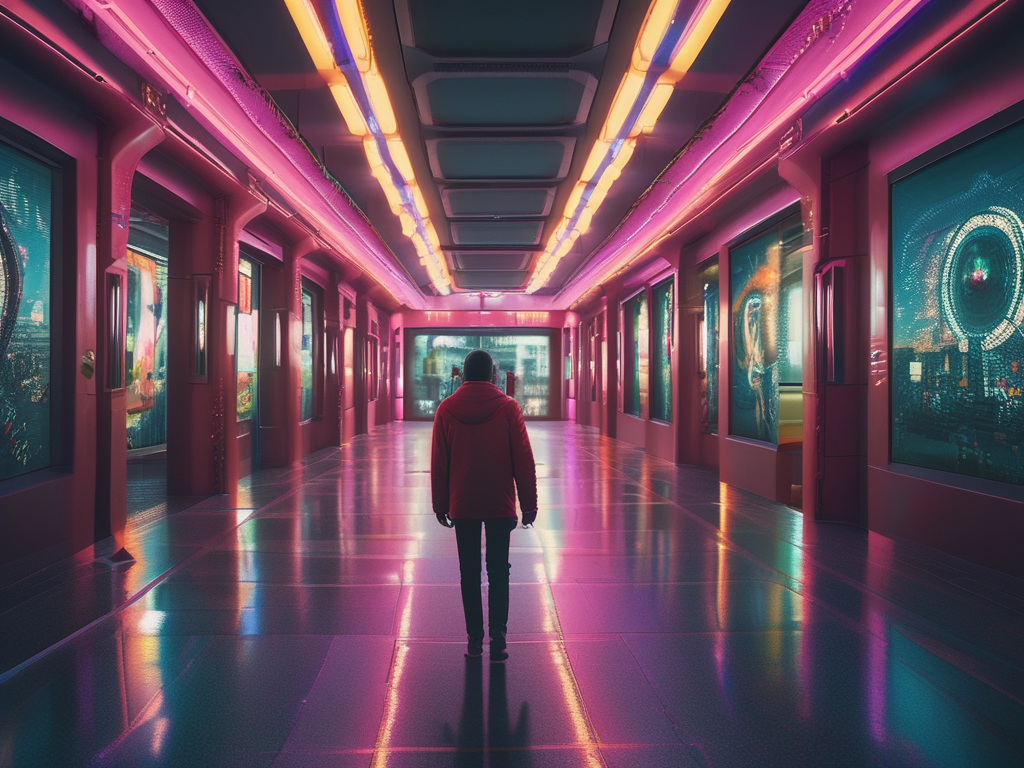Peering into Tomorrow: The Future of AI and Technology
By Dan Thomson
I’m often asked to share my thoughts on where AI and technology are heading. In this post, I’ll attempt to predict the course of technological progress over the next 1, 5, 10, 50, and 100 years. While some of these predictions may seem bold, they’re grounded in current trends and the exponential pace of technological advancement we’re witnessing.

The Next 12 Months: AI Integration Accelerates
In the immediate future, we’re set to see AI become increasingly embedded in our daily lives. Language models are already impressively advanced, but within a year, I expect them to reach new heights of sophistication.
We’ll likely witness AI models capable of producing high-quality creative content, from literature to music. This isn’t to say that AI will replace human creativity, but it will certainly augment it. Imagine an AI that can generate a first draft of a novel based on a brief outline, or compose a piece of music in the style of any genre or artist.
In the tech sector, AI integration will become ubiquitous. From smart home devices to personal gadgets, AI will be the invisible assistant streamlining our daily routines. Your refrigerator might start suggesting recipes based on its contents, while your calendar could automatically reschedule your day when you’re running late.
However, this rapid integration will inevitably spark intense ethical debates. We’ll need to grapple with questions of AI rights, data privacy, and the potential impact on employment. Universities may well start offering specialised courses in AI ethics and human-AI interaction.

5 Years Down the Line: AI as Collaborator
Looking ahead five years, I believe we’ll see AI evolve from a tool to a collaborator. AI assistants will become incredibly personalised, learning our habits, preferences, and even anticipating our needs.
At Sensay, we’re working towards digital replicas that can truly stand in for individuals in various contexts. Within five years, I expect we’ll have digital doubles capable of handling routine tasks, from attending meetings to managing email correspondence. The challenge will be maintaining the human touch in these interactions.
In creative fields, we’ll likely see human-AI collaborations becoming the norm. AI might generate multiple versions of a film script, which a human director then refines and brings to life. Or AI could produce variations on architectural designs, which human architects then modify and perfect.
Societally, we’ll need to adapt to this new paradigm. The concept of productivity may need redefining when AI can handle many of our routine tasks. We might see a shift towards valuing uniquely human skills like emotional intelligence, creativity, and complex problem-solving even more highly.

A Decade Away: The Blurring of Boundaries
Ten years from now, the line between human and machine intelligence may start to blur significantly. I predict we’ll see major advancements in brain-computer interfaces, moving them from the realm of cutting-edge medical technology to consumer products.
These interfaces could revolutionise learning and skill acquisition. Imagine being able to download language packs directly to your brain, or temporarily boost your cognitive abilities for specific tasks. This technology could democratise education in unprecedented ways, but it will also raise profound questions about human identity and the nature of skills and knowledge.
In scientific research, I expect we’ll see hybrid teams of human scientists and AI becoming the standard. This collaboration could accelerate breakthroughs in fields like renewable energy, space exploration, and medicine. We might finally unravel some of the universe’s greatest mysteries, from the nature of dark matter to the intricacies of human consciousness.
The nature of work will likely undergo a radical transformation. With AI handling many routine cognitive tasks and brain-computer interfaces enhancing human capabilities, we’ll need to rethink our education systems and career pathways. Lifelong learning and adaptability will become more crucial than ever.

Half a Century Later: The Post-Human Era?
Projecting 50 years into the future starts to become quite difficult, but based on current trends, we might be looking at the dawn of what some call the “post-human” era.
By this point, we may have achieved artificial general intelligence (AGI) – AI systems capable of matching or surpassing human intelligence across all domains. This could lead to an explosion of scientific and technological progress beyond our current imagination.
One area that might see radical advancement is life extension. With AGI assisting in medical research, we could crack the code of ageing, potentially extending human lifespans significantly. This would have profound implications for society, from retirement ages to family structures.
Space exploration and colonisation could be in full swing, with AI playing a crucial role. We might have self-replicating AI probes exploring the galaxy, or AI systems managing life support on Mars colonies.
The very definition of what it means to be human may need to be reconsidered. With advanced brain-computer interfaces and potential mind uploading technologies, the boundaries between biological and digital existence could become very fuzzy indeed.

A Century Hence: The Unimaginable Future
Attempting to predict a hundred years into the future is a task that borders on the impossible. The world of 2124 might be as incomprehensible to us as our world would be to someone from 1924. This may not even be a fair comparison, with the latest global revolution, following in the footsteps of the agricultural, industrial and technological revolutions, AI may find new revolutions faster, the cycles of which getting exponentially smaller.
We might be looking at a post-singularity world, where AI has advanced to a point of unrecognisable superiority. This doesn’t necessarily mean a dystopian future of AI overlords, but rather a symbiotic relationship between humans and AI that we can scarcely imagine with our current framework.
The concept of individual consciousness might be radically different. Perhaps we’ll have the ability to merge our minds with vast networks of other consciousnesses, experiencing reality in entirely new ways.
The very nature of reality might be up for grabs. With sufficiently advanced technology, we might be able to create and inhabit virtual universes indistinguishable from our own. The philosophical implications of such capabilities are staggering.
Of course, all of these predictions assume a relatively stable progression of our current technological trajectory. The reality could be wildly different. We might face unforeseen challenges that fundamentally alter our path, or we might make discoveries that open up possibilities we can’t even conceive of today.

Challenges and Potential Downsides
While the future of AI and technology holds immense promise, it’s crucial to acknowledge and address the potential challenges and downsides that may arise. As we navigate this rapidly evolving landscape, several key concerns demand our attention:
1. Privacy and Data Security: As AI systems become more sophisticated and integrated into our lives, they will require vast amounts of personal data to function effectively. This raises significant privacy concerns. How do we ensure that this data is protected from breaches or misuse? The potential for deep fakes and identity theft could increase dramatically in a world of digital replicas.
2. Economic Disruption: While AI has the potential to boost productivity and create new job categories, it may also lead to significant job displacement. Entire industries could be transformed, potentially leaving many workers without clear career paths. We need to consider how to manage this transition and ensure that the benefits of AI are distributed equitably.
3. Algorithmic Bias: AI systems are only as unbiased as the data they’re trained on and the humans who design them. There’s a real risk of perpetuating or even amplifying existing societal biases in areas like hiring, lending, or criminal justice if these systems are not carefully designed and monitored.
4. Dependence and De-skilling: As we rely more heavily on AI for decision-making and task performance, there’s a risk of losing important skills and becoming overly dependent on technology. This could leave us vulnerable in situations where technology fails or is unavailable.
5. Social and Psychological Impact: The increasing presence of AI in our lives, particularly in the form of digital replicas, could have profound effects on human psychology and social interactions. Will we lose the ability to connect deeply with other humans? How will our sense of self be affected by the existence of digital doubles?
6. Existential Risk: As we approach the possibility of artificial general intelligence (AGI) and beyond, we must grapple with the potential existential risks to humanity. How do we ensure that superintelligent AI systems align with human values and priorities?
7. Ethical Dilemmas: The advancement of AI will present us with complex ethical dilemmas. For instance, who is responsible when an AI makes a decision that results in harm? How do we programme ethics into AI systems, and whose ethics should they be?
8. Regulatory Challenges: Technology often outpaces regulation. Developing appropriate governance frameworks for AI that balance innovation with protection of public interests will be a significant challenge.
9. Digital Divide: As AI and advanced technologies become more prevalent, there’s a risk of exacerbating existing inequalities between those who have access to these technologies and those who don’t, both within and between nations.
10. Environmental Impact: The computing power required for advanced AI systems consumes significant energy. As AI becomes more widespread, managing its environmental footprint will be crucial.
We must strive to develop AI systems that are transparent, accountable, and aligned with human values.
As we move forward, it’s essential to maintain a balanced perspective – embracing the potential of AI and technology while remaining vigilant about its risks. By anticipating and actively working to mitigate these challenges, we can strive to create a future where the benefits of AI are maximised and the downsides are minimised.
Conclusion: Embracing the Unknown
As we peer into the future of AI and technology, one thing becomes clear: change is the only constant. The pace of technological progress is accelerating, and the world of tomorrow will likely be very different from the one we know today.
While some of these predictions may seem far-fetched, it’s worth remembering that many of the technologies we take for granted today would have seemed like science fiction just a few decades ago. The smartphone in your pocket is more powerful than the computers that sent humans to the moon.
As we move forward into this brave new world, it’s crucial that we do so thoughtfully and ethically. We need to ensure that as our technology advances, it enhances rather than diminishes our humanity. We must grapple with the ethical implications of each new development and strive to create a future that benefits all of humanity.
The future is not set in stone. It’s up to us – scientists, technologists, policymakers, and citizens – to shape the world we want to live in. As we continue to push the boundaries of what’s possible with AI and technology, let’s make sure we’re creating a future we’ll be proud to inhabit.
The journey into tomorrow is just beginning, and it promises to be the most exciting adventure in human history. Let’s embrace it with open minds, critical thinking, and a commitment to using technology to create a better world for all.
About Sensay
Sensay stands at the forefront of the digital replica revolution, pushing the boundaries of what’s possible in AI and human-computer interaction. Founded in 2019, our mission is to create lifelike digital replicas of individuals that can seamlessly perform tasks and interactions on their behalf.
At Sensay, we believe in a future where technology doesn’t just assist us, but truly represents us in the digital realm. Our cutting-edge AI models are trained on vast amounts of personal data – from written communications and vocal patterns to decision-making tendencies and personal preferences. The result is a digital twin that can think, respond, and act in a manner nearly indistinguishable from its human counterpart.
Our technology has wide-ranging applications across various sectors:
1. Business and Professional Services: Imagine having a digital replica attend meetings, respond to emails, or even give presentations on your behalf, freeing you to focus on high-level strategy and creative thinking.
2. Healthcare: Digital replicas can serve as always-available health advocates, providing doctors with accurate patient histories and helping patients manage complex treatment regimens.
3. Education: Personalised digital tutors can adapt to each student’s learning style, providing round-the-clock support and guidance.
4. Entertainment: From gaming to virtual reality, digital replicas open up new possibilities for immersive, personalised experiences.
At Sensay, we’re acutely aware of the ethical implications of our work. We adhere to strict data protection protocols and are committed to transparency in AI. We believe that digital replicas should augment human capabilities, not replace human connection.
As we continue to develop this technology, we’re not just coding algorithms; we’re shaping the future of human-AI interaction. At Sensay, we’re not just predicting the future – we’re building it.
About the Author
Dan Thomson is the founder and CEO of Sensay, a pioneering company at the forefront of creating lifelike digital replicas. These advanced AI constructs are capable of performing tasks and interactions that are virtually indistinguishable from those of the individuals they represent. With a background in Philosophy, Web3 and a series of businesses under his belt, Dan has been a thought leader in the AI space for over a decade since publishing his books on mind uploading and digital immortality. He regularly speaks at international technology conferences and advises governments on AI policy.

Dan brings his expertise in digital replication and 7 years in Web3 to Sensay. His entrepreneurial spirit, evidenced by founding multiple startups, drives Sensay’s mission to enhance global potential for humanity.